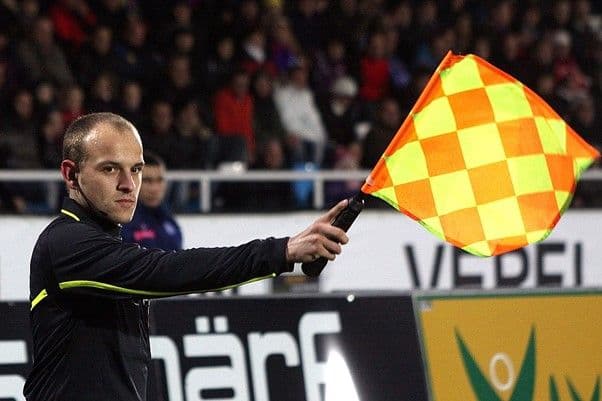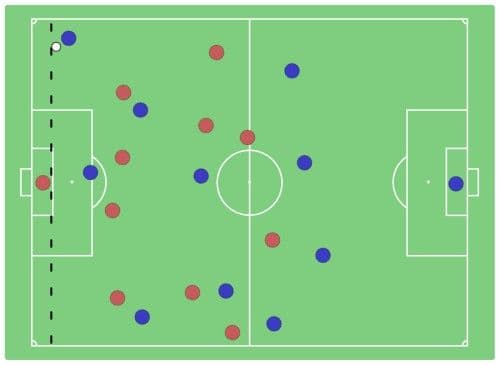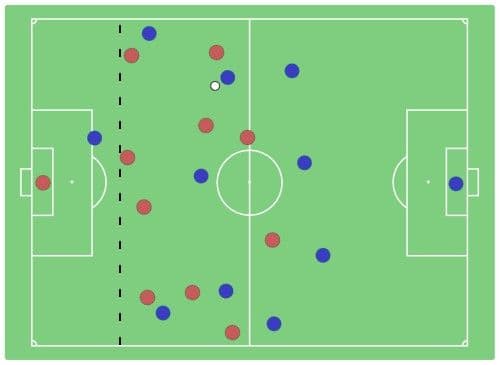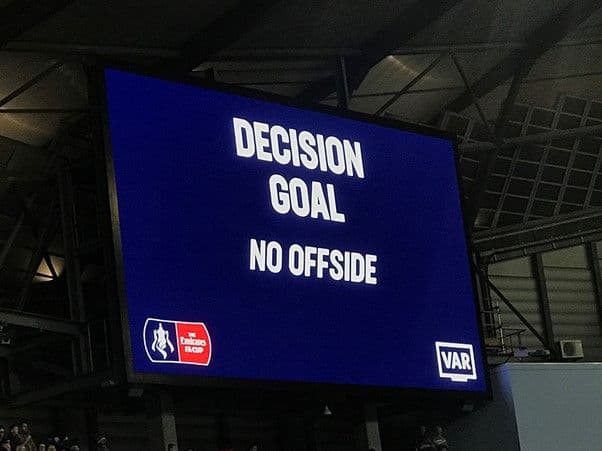Football
Understanding Offside: The Key Football Rule
Understand the offside rule rapidly with our in-depth guide.

There does not exist a more controversial rule in football than the offside. Understanding the offside rule is key to understanding the game of football.
SportsBoom takes a look at the offside law to find out what this key football rule is, how it works, and its impact on the beautiful game.
What is the offside rule in football?
The offside rule was introduced 141 years ago, and it is still the hardest rule to understand, and with the advent of Video Assistant Referee (VAR), remains one of the most controversial topics in football.
The offside rule was first introduced in 1883 when the Football Association (FA) formalised football rules.
Offside was constructed to deter players from always standing near the opposition goal to look for scoring opportunities.
Without the offside rule, long balls could be kicked directly towards teammates in the opposition goal area.
This strategy would prove to be effective, thereby reducing the element of skill and strategy in football games.

Image Credit: NielsF
The blue forward in the penalty area of the above diagram is not in an offside position, as they are behind the ball, despite the fact that they are closer to the opponents' goal line than the second-last opponent.
Law 11: The Offside Rule in Football
Offside is one of the laws in association football, codified in Law 11 of the Laws of the Game.
Law 11 states that a player is in an offside position if any part of their body, except the hands and arms, are in the opponent's half of the football field and closer to the opposition's goal line than both the ball and the second-last opponent (the last opponent is usually the goalkeeper).
Being in an offside position is not always an offence.
However, a player positioned when the ball is played by a teammate can be judged guilty of an offside offence if they receive the ball or will otherwise become "involved in active play," will "interfere with an opponent," or will "gain an advantage" by being in that position.

Image Credit: NielsF
The blue forward on the left of the diagram above is in an offside position as they are ahead of both the ball and the second-last opponent (marked by the dotted line) in the opponents' half of the pitch. This does not necessarily mean they are committing an offside offence. It becomes an offence only if the ball is played or touched by a teammate while the player is in an offside position and subsequently becomes involved in active play according to the definitions given in the Laws of the Game no matter if any of these events occur after they move to an onside position.
Changes to the offside rule
In 2017, the wording for Law 11 had changed. To be judged in an offside position, "The hands and arms of all players, including the goalkeepers, are not considered. Two conditions must be met:
• Any part of a player's head, body or feet is in the opponent's half of the field (excluding the halfway line).
• Any part of a player's head, body or feet is closer to the opponent's goal line than the ball and the second-last opponent.
Offside is often signalled by the assistant referees – the two assistants observing the play from the sidelines in each half of the pitch – or the Video Assistant Referee (VAR).
Formally known as 'Linesmen', the referee's assistants hold a flag over or in front of them to signal an offside offence.
However, since VAR was introduced in 2016, there has been a second check on offside calls leading to goals.

Image Credit: Rlwjones
How does VAR affect the offside rule in football?
VAR is a group of additional match officials sitting in front of a video screen at their headquarters, reviewing the on-pitch match officials' decisions when necessary.
Since its inception, VAR has courted a lot of controversy due to its misuse and the vagueness of the interpretation of the laws of the game of football.
VAR checks the assistant referees' calls using video footage and technology.
VAR can overturn the original decision and re-award the goal if replays suggest that the on-field officials' decisions were incorrect and check for any offsides after every goal.
If offside is missed by the on-field officials, it is looked at by the VAR during a re-check, and the goal is cancelled.
For more guides, the latest news, and exclusive interviews in football, make sure to stay connected to Sportsboom.com.

Kaylan Geekie is a sports fanatic. He attended Durban High School before moving to Scotland, where he lived for 15 years. During his time in the United Kingdom, Kaylan graduated with a first-class BA Honours Degree in Sports Journalism at the University of the West of Scotland. Kaylan worked for nine years as the Match-Day Editor of SuperXV.com, reporting on Super Rugby, The Rugby Championship, the 2015 Men's Rugby World Cup and the 2017 British & Irish Lions series for the website.